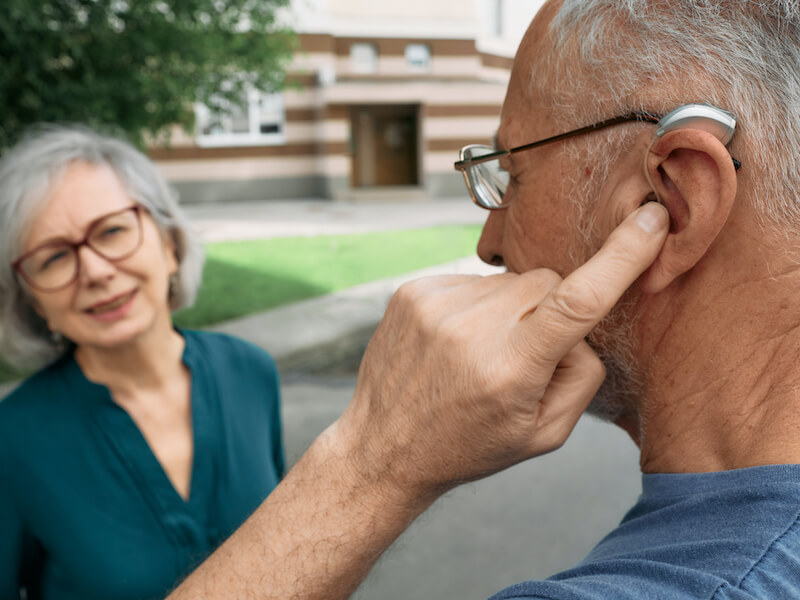
Have you ever been watching your favorite Netflix movie when your internet suddenly cuts out? Instead of finding out who won the baking show, you have to watch an endless spinning circle. And so you just wait. Perhaps it’s your modem, might be your router, possibly it’s the internet company, or possibly it’ll just fix itself. It’s not a great feeling.
When technology breaks down, it can be really aggravating. Your hearing aids certainly fall into this category. The majority of the time, your hearing aids will provide you with the means to stay connected to loved ones, have discussions with co-workers, and keep up with your neighbors.
But when they stop working, your hearing loss symptoms can abruptly become a lot more frustrating. The technology you’re depending on has failed you. Why would your hearing aids just quit functioning? So what should you do? Well, there are three common ways that hearing aids can fail, here’s how you can begin to recognize and troubleshoot those problems.
Hearing aids can often have three common issues
Hearing aids are sophisticated devices. Even still, there are some common issues that people with hearing aids may encounter. Here’s what might be causing those issues (and what you can do to fix them).
Whistling and feedback
So, perhaps you’re attempting to have a conversation with your family or watch your favorite television show and you start to hear a dreadful whistling noise. Or perhaps you notice some feedback. You begin to think, “this is weird, what’s up with this whistling”?
Whistling and feedback can be caused by these possible problems:
- For individuals who wear behind-the-ear hearing aids, the tubing that connects your earmold with your hearing aid might have become compromised. Take a close look to see if the tube might have separated or might be compromised somehow.
- Your hearing aids may not be sitting in your ears correctly. Try to take them out and re-seat them. If the fit isn’t correct you may need to come see us so we can help you get a better fit.
- Earwax accumulation in your ear canal can compromise how your hearing aid works. You’ll notice this comes up pretty regularly. Whistling and feedback are often one result of this type of earwax buildup. You can try to clean some of the earwax out (never use a cotton swab) and if that doesn’t work out, you can get some help from us.
Depending on the root cause of the feedback, we can help you deal with these issues if you can’t figure them out on your own.
No sound coming from your hearing aids
Your hearing aids are supposed to make, well, sound. That’s their principal function! Something has certainly gone wrong if you don’t hear any sound coming out of your hearing aid. So what could be the explanation when hearing aids work but no sound comes out? Well, there are a few things:
- Power: Everyone forgets to turn their hearing aids on once in a while. Make certain that isn’t the problem. Then you can cross that of the list of possible issues.
- Batteries: If you have rechargeable batteries, make certain that they are fully charged. And even rechargeable batteries should be switched out on occasion.
- Earwax buildup: Yup, earwax strikes again. Inspect your device for signs of earwax on the microphone or speakers or any sensitive parts. Keep your device really clean.
- Your settings: If you have them, flip through your custom settings. Your hearing aids might think you’re in a huge room when you’re actually in a small room because the setting isn’t right. This incorrect setting could throw off the sound you’re hearing.
If these steps don’t help with your problems, we may have the answers. Whether repair, maintenance, or replacement is your next step, we will be able to help you figure that out.
When you have your hearing aids in, your ears hurt
Maybe your hearing aids are fine functionally but they hurt when you put them in. And you’re likely wondering why your hearing aids would make your ears hurt. This kind of discomfort is not exactly conducive to wearing your hearing aids over the long term. So, what could be causing it?
- Fit: The most obvious problem can be the fit. After all, the majority of hearing aids work best when they fit tightly. Which means that there can sometimes be pain involved in a poor fit. Some models of hearing aid can be fit to the distinct shape of your ears. The better the fit, the fewer issues you’ll have with pain over the long haul. We will be able to help you achieve the best possible fit from your devices.
- Time: Usually, it just takes some time to get used to your hearing aids. How long it takes will depend on the person. It’s worth talking about when you purchase your hearing aids so you have a reasonable concept of how long it may take you to get comfortable with your devices. If uncomfortable ears persist, talk to us about that as well!
Avoid issues with a little test drive
Before you commit to a pair of hearing aids, it’s a smart plan to test them for a while. In the majority of cases we’ll let you test out a set of devices before you determine that’s the set for you.
In fact, we can help you identify the best kind of hearing aid for your needs, adjust the fit to match your ears, and help you manage any extended issues you may have with your devices. In other words, when your devices stop working, you’ll have a resource that can help!
And that’s a lot more than you will get from an over-the-counter hearing aid!